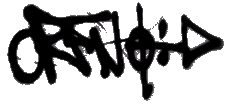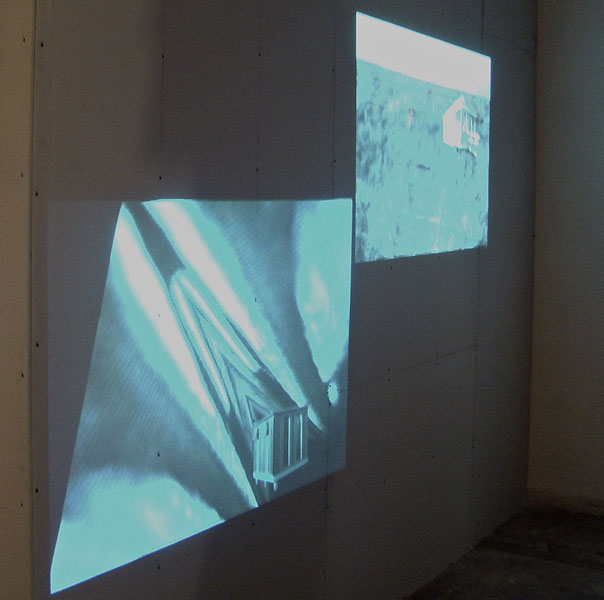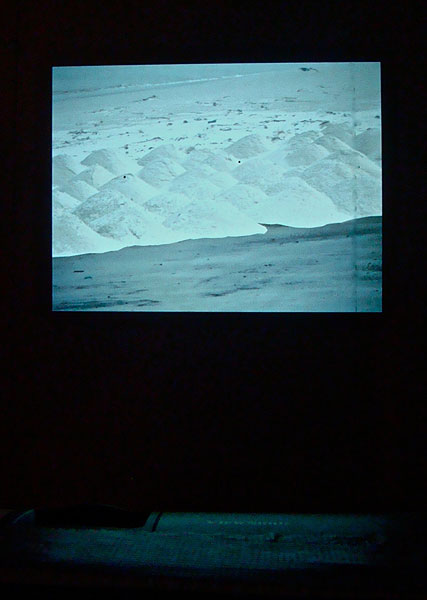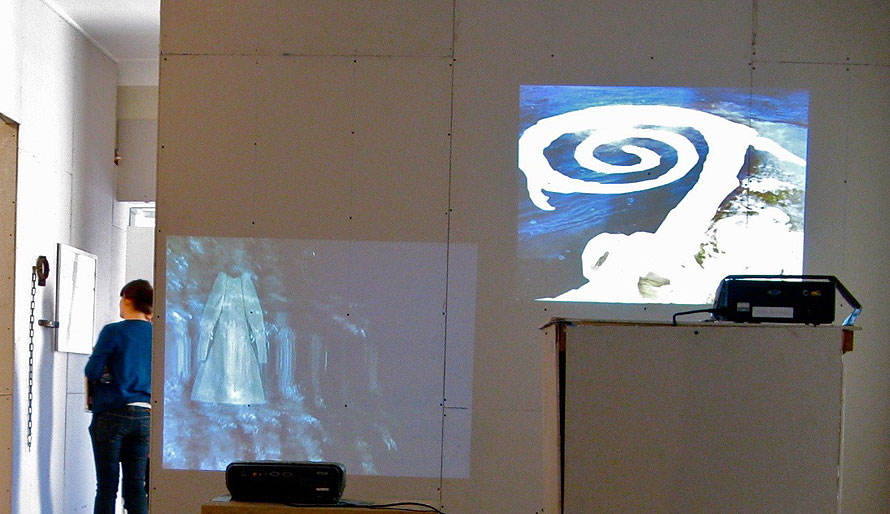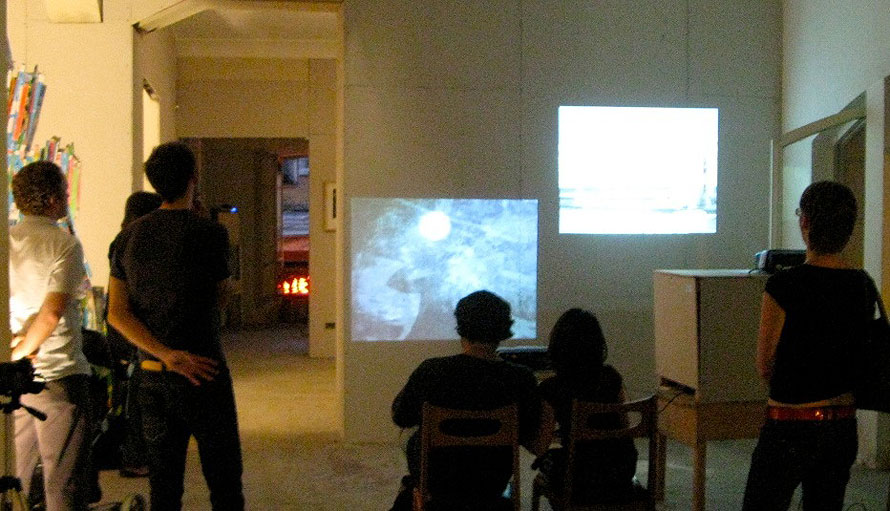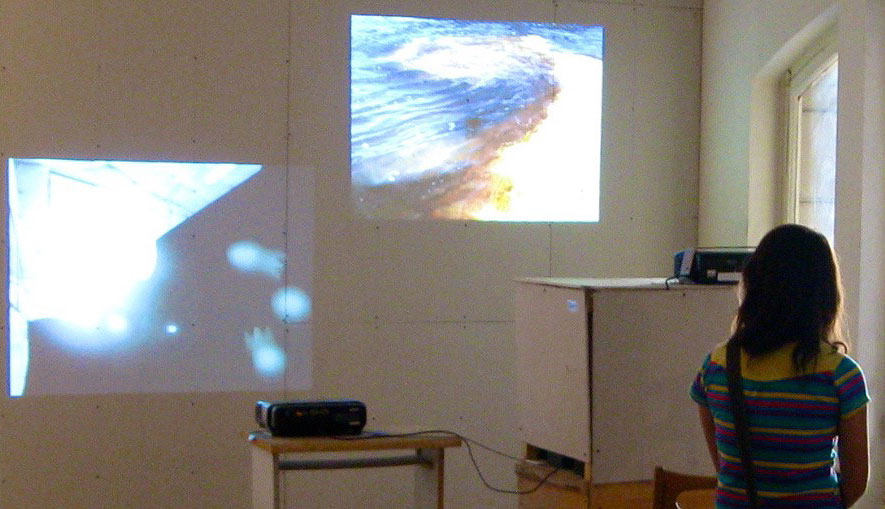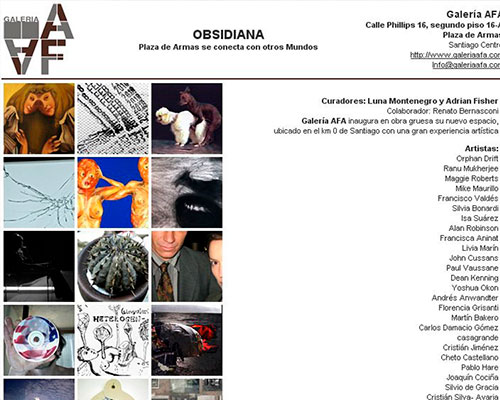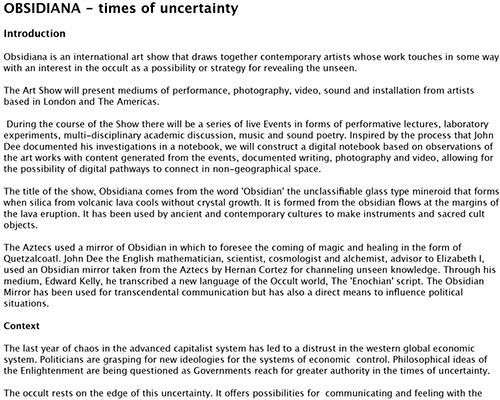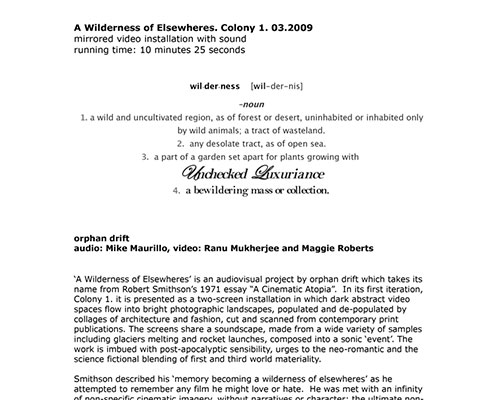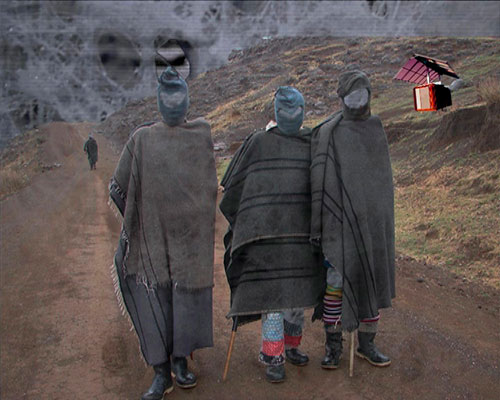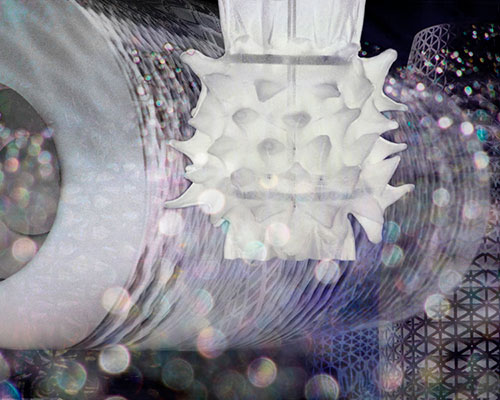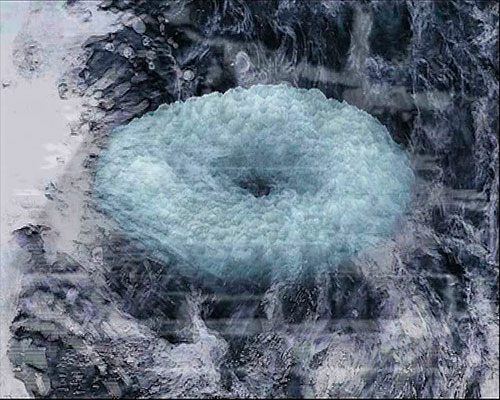A WILDERNESS OF ELSEWHERES. COLONY 1. 03.2009
mirrored video installation with sound
running time: 10 minutes 25 seconds
wil•der•ness . [wil-der-nis]
–noun
1. a wild and uncultivated region, as of forest or desert, uninhabited or inhabited only
by wild animals; a tract of wasteland.
2. any desolate tract, as of open sea.
3. a part of a garden set back apart for plants growing with
Unchecked Luxuriance
4. a bewildering mass or collection.
0rphan Drift
audio: Mike Maurillo, video: Ranu Mukherjee and Maggie Roberts
‘A Wilderness of Elsewheres’ is an audiovisual project by 0rphan Drift which takes its name from Robert Smithson’s 1971 essay “A Cinematic Atopia”. In its first iteration, Colony 1. it is presented as a two-screen installation in which dark abstract video spaces flow into bright photographic landscapes, populated and de-populated by collages of architecture and fashion, cut and scanned from contemporary print publications. The screens share a soundscape, made from a wide variety of samples including glaciers melting and rocket launches, composed into a sonic ‘event’. The work is imbued with post-apocalyptic sensibility, urges to the neo-romantic and the science fictional blending of first and third world materiality.
Smithson described his ‘memory becoming a wilderness of elsewheres’ as he attempted to remember any film he might love or hate. He was met with an infinity of non-specific cinematic imagery, without narratives or character: the ultimate non-site. In relating the contemporary screen, with its multiplicity of function as window, mirror, portal and page, to the notion of the black mirror as a predictive device, we felt this physiological wilderness extending to include real world places and global consciousness.
Colony 1, made to resemble the volcanic process which allows obsidian to form, was composed in five 2 minute sections; heat, erupt, flow, freeze and still. Drawing a parallel between the screen and the black mirror, the video artists, one in San Francisco and one in Capetown, each produced a single screen using the same source material so that they would reflect each other without being able to see each other. Also inspired by the principle of mirroring, the audio artist found organic and synthetic sounds which reflected each other to create his composition.
Obsidian, as a material made into the shape of various cultural value systems, became, for us, an embodiment of the peripheral. Formed at the edges of lava flow, its various human uses had to do with physical and metaphysical boundaries. The pre-columbian obsidian mirror was a tool for attempting to understand what is just beyond the limits of current knowledge and consciousness. The contemporary surgical instrument is a tool for making precise cuts through the edges of our bodies.
The once peripheral arctic weaves its way into our every day, making our structures seem fleeting, our shelters temporary. Clothing and architecture are the edges of us. As a form of evidence and presence, they may be the objects by which the predictive mechanism of the black mirror is possible.
‘A Wildernes of Elsewheres’ describes miscegenation between human production and geologic time, primitive and contemporary technology. There is an awkward temporality in the combination of still and moving, animation and video, unapologetic collage and ‘organic’ texture. The tundra, iceflows, burns, flotsam and jetsam have an elegiac sublime tone- proliferating landscapes of aftermath- still and unyielding. The audio carries with it the persistent sense of an event. Architecture and clothing become sculptural. Collage becomes a way of thinking about edges, cutting cloth to fit a body or making a building to carve out space. It points to what happens at the edges of things, and to the history of pictorial landscape as an invention by framing. At once immersive and deconstructive, the work is collision, co-habitation, evolutionary fever-dream.
on SCIENCE FICTION and THE LIMINAL
“Liminality is a positional as well as temporal phenomenon. It is symbolic of the liminal state
itself and of its permanent accessibility. A matrixial border space. A catalyst for social and
individual transformation. It can overlook the usual requirements of biology, economics,
socius, even of metaphysical possibility, in order to posit radically altered limits.”
(Pelton “The Trickster In West Africa”, 1980).
A Wilderness of Elsewheres suggests science fictional journeys, encoding an alien timeframe- whether future or past. Tundra, ocean and ice could be the start of a cycle- the start of the technological drive to change the landscape. Yet these are the contemporary proliferating symbols of aftermath. Wildernesses fashion and architecture collages, often using futuristic, survivalist, nomadic or space travel elements, blinking in and out of existence in the inhuman raw beautiful scapes of Southern Africa, are positing haunted futures. They exist as interventions, moments on a surface. They transmit indistinct ‘meaning’ and layers of possible interpretation. The folds, surfaces and perception warps seduce with strangeness.
The animation is the metaphysical dimension- the unknown- the hidden, unidentifiable substance and trickery- communication with the unseen. Manifesting connections, threads, virtual bands of flexing matter- the animated imagery is thrust up into the flow, weaving fictive and ‘real’ dimensions.
Intimations of the Atlantis myth- operating as a feedback loop or software of the unconscious – a race that brings about it’s own destruction time-travels into the future to make it all happen again. Any culture that intensifies faces the apocalypse.
For us, to dream the future, to channel the predictive obsidian mirror, science fiction and technology become tools, such as magic once was, for transformation.
We are cutting through time, using the obsidian mirror to see past apocalyptic hauntings, to colonize experimental realities, weaving space, time and matter into fluid temporary configurations that are essentially science-fictional.
Science fiction is produced out of cultural necessity- a liminal presence that inhabits prediction and flux, resisting definition and containment. It is a trickster figure, encapsulating playful perversion, social liminality and unpredictability in order to navigate transformation.
This is the liminal: always slippery and ambiguous, dissolving boundaries and opening horizons. It is the living connection between the wild and the social, between the potentially and the actually human, an imaginer of life.
